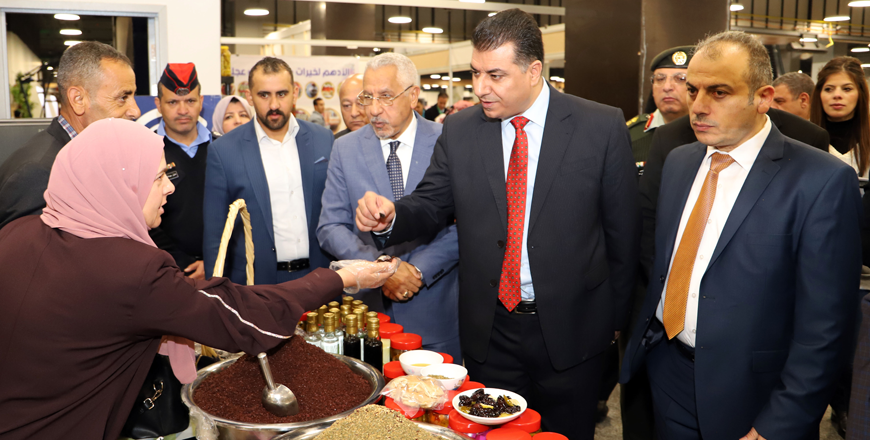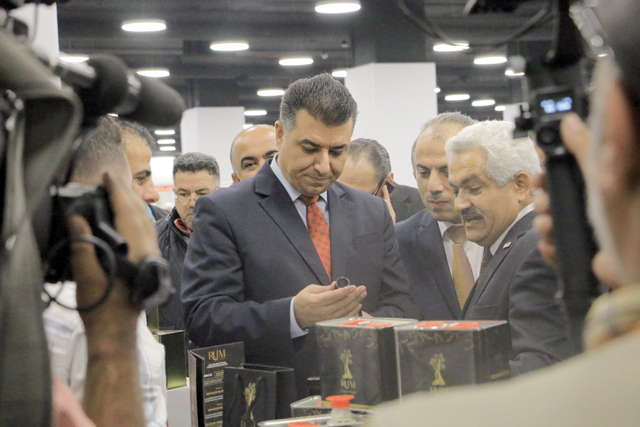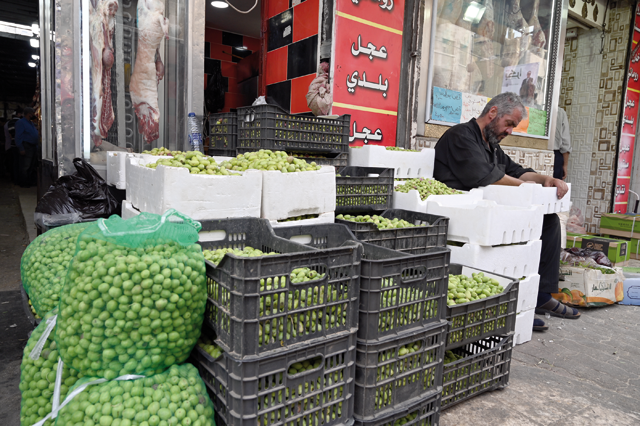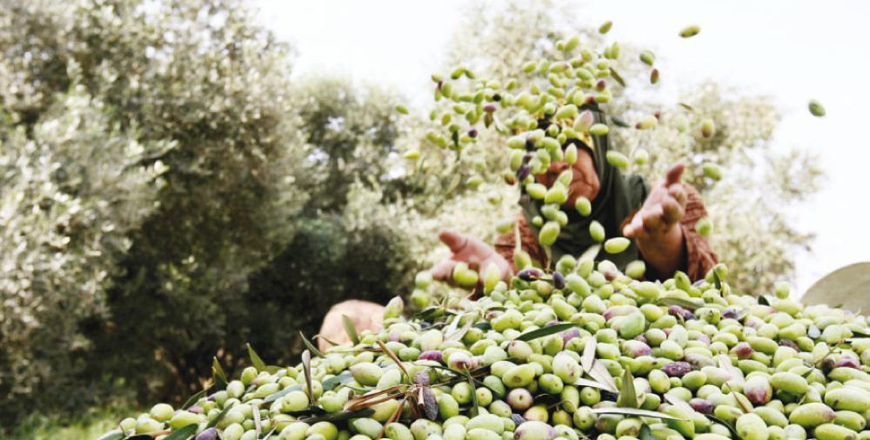You are here
22nd National Olive Festival begins
By JT - Nov 25,2022 - Last updated at Nov 25,2022

Agriculture Minister Khalid Hneifat visits a stall during the inauguration of 22nd National Olive Festival and the Rural Products Exhibition at Mecca Mall on Thursday (Petra photo)
AMMAN — Deputising for His Majesty King Abdullah, Agriculture Minister Khalid Hneifat on Thursday inaugurated the 22nd National Olive Festival and the Rural Products Exhibition, which is considered key marketing platform for olive farmers and rural households.
Hneifat said that the festival, held at Mecca Mall’s exhibition centre, is in accordance with Royal directives to highlight the manufacturing and agricultural sectors, especially since the olive sector is a leader in this regard, the Jordan News Agency, Petra, reported.
The minister also called for supporting olive farmers and rural families in helping realise sustainable agricultural development goals as they are in consonance with a decision to stop the import of olive oil to maintain the capability and sustainability of Jordanian olive farmers.
He also expressed pride in the National Agricultural Research Centre (NARC), the scientific arm of the ministry, which is entrusted with implementing the outcomes of scientific research, noting that the festival is a model in transforming creative ideas into entrepreneurial projects.
NARC Director General Nizar Haddad commended the role of local and international partners in supporting the goals of the festival through enhancing the steadfastness of farmers and sustaining their production capacity.
Haddad also highlighted the importance of organising festivals and exhibitions in improving national production.
He estimated that the volume of investments in the olive sector value more than JD1 billion, including olive mills, production equipment, olive manufacturing and oil packaging.
Olive cropland in the Kingdom covers some 90,000 acres, with an average local production of 150,000 to 200,000 tonnes of olives over the past two years, Haddad said.
Some 80 per cent of the harvest is used for producing oil, totalling an average of 25,000 to 30,000 tonnes, he added.
Related Articles
AMMAN — The Jordan HortiFuture Project is participating in the 22nd National Olive Festival and Rural Products Exhibition, which began on Th
AMMAN — The 22nd edition of the National Olive Festival and Rural Products’ Exhibition is set to kick off on Thursday in Amman.The 10-day fe
AMMAN — The Kingdom is expected to yield 33,000 tonnes of olive oil this season, according to Olive Oil Producer and Mill Owner Syndicate Sp



















